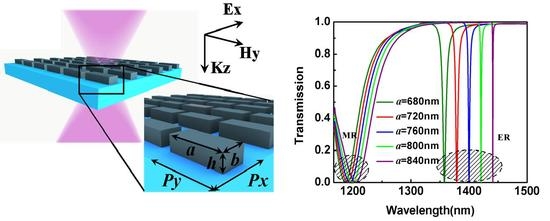High Q-Factor Resonance in a Symmetric Array of All-Dielectric Bars
Abstract
:1. Introduction
2. Simple Silicon Rod Arrays with High Q Resonance
3. Conclusions
Acknowledgements
Author Contributions
Conflicts of Interest
References
- Meinzer, N.; Barnes, W.L.; Hooper, I.R. Plasmonic meta-atoms and metasurfaces. Nat. Photonics 2014, 8, 889–898. [Google Scholar] [CrossRef] [Green Version]
- Gu, J.; Singh, R.; Liu, X.; Zhang, X.; Ma, Y.; Zhang, S.; Maier, S.A.; Tian, Z.; Azad, A.K.; Chen, H.L.; et al. Active control of electromagnetically induced transparency analogue in terahertz metamaterials. Nat. Commun. 2012, 3, 1151. [Google Scholar] [CrossRef] [PubMed]
- Singh, R.; Cao, W.; Al-Naib, I.; Cong, L.; Withayachumnankul, W.; Zhang, W. Ultrasensitive terahertz sensing with high-Q Fano resonances in metasurfaces. Appl. Phys. Lett. 2014, 105, 41–48. [Google Scholar] [CrossRef]
- Jahani, S.; Jacob, Z. All-dielectric metasurfaces. Nat. Nanotechnol. 2016, 11, 23–26. [Google Scholar] [CrossRef] [PubMed]
- Wu, C.; Arju, N.; Kelp, G. Spectrally selective chiral silicon metasurfaces based on infrared Fano resonance. Nat. Commun. 2014, 5, 3892. [Google Scholar] [CrossRef] [PubMed]
- Yang, Y.; Kravchenko, I.I.; Briggs, D.P. All-dielectric metasurface analogue of electromagnetically induced transparency. Nat. Commun. 2014, 5, 5753. [Google Scholar] [CrossRef] [PubMed]
- Li, G.; Zhang, S.; Zentgraf, T. Nonlinear photonic metasurfaces. Nat. Rev. Mater. 2017, 2, 17010. [Google Scholar] [CrossRef]
- Boltasseva, A.; Atwater, H.A. Low-loss plasmonic metamaterials. Science 2011, 331, 290–291. [Google Scholar] [CrossRef] [PubMed]
- Fedotov, V.A.; Rose, M.; Prosvirnin, S.L.; Papasimakis, N.; Zheludev, N.I. Sharp trapped-mode resonances in planar metamaterials with a broken structural symmetry. Phys. Rev. Lett. 2007, 99, 147401. [Google Scholar] [CrossRef] [PubMed]
- Cao, W.; Singh, R.; Al-Naib, I.; He, M.; Taylor, A.J.; Zhang, W. Low-loss ultra-high-Q dark mode plasmonic Fano metamaterials. Opt. Lett. 2012, 37, 3366–3368. [Google Scholar] [CrossRef] [PubMed]
- Al-Naib, I.; Jansen, C.; Singh, R.; Walther, M.; Koch, M. Novel THz metamaterial designs: From near-and far-field coupling to high-Q resonances. IEEE Trans. Terahertz Sci. Technol. 2013, 3, 772–782. [Google Scholar] [CrossRef]
- Al-Naib, I.; Hebestreit, E.; Rockstuhl, C.; Lederer, F.; Christodoulides, D.; Ozaki, T.; Morandotti, R. Conductive coupling of split ring resonators: A path to THz metamaterials with ultrasharp resonances. Phys. Rev. Lett. 2014, 112, 183903. [Google Scholar] [CrossRef] [PubMed]
- Luk’yanchuk, B.; Zheludev, N.I.; Maier, S.A.; Halas, N.J.; Nordlander, P.; Giessen, H.; Chong, C.T. The Fano resonance in plasmonic nanostructures and metamaterials. Nat. Mater. 2010, 9, 707–715. [Google Scholar] [CrossRef] [PubMed]
- Srivastava, Y.K.; Cong, L.; Singh, R. Dual-surface flexible THz Fano metasensor. Appl. Phys. Lett. 2017, 111, 201101. [Google Scholar] [CrossRef]
- Dayal, G.; Solanki, A.; Chin, X.Y.; Sum, T.C.; Soci, C.; Singh, R. High-Q plasmonic infrared absorber for sensing of molecular resonances in hybrid lead halide perovskites. J. Appl. Phys. 2017, 122, 73101. [Google Scholar] [CrossRef]
- Gupta, M.; Singh, R. Toroidal versus Fano resonances in high Q planar THz metamaterials. Adv. Opt. Mater. 2016, 4, 2119–2125. [Google Scholar] [CrossRef]
- Srivastava, Y.K.; Manjappa, M.; Krishnamoorthy, H.N.S.; Singh, R. Accessing the high-Q dark plasmonic Fano resonances in superconductor metasurfaces. Adv. Opt. Mater. 2016, 4, 1875–1881. [Google Scholar] [CrossRef]
- Dayal, G.; Chin, X.Y.; Soci, C.; Singh, R. High-Q Whispering-Gallery-Mode-Based Plasmonic Fano Resonances in Coupled Metallic Metasurfaces at Near Infrared Frequencies. Adv. Opt. Mater. 2016, 4, 1295–1301. [Google Scholar] [CrossRef]
- Staude, I.; Schilling, J. Metamaterial-inspired silicon nanophotonics. Nat. Photonics 2017, 11, 274–284. [Google Scholar] [CrossRef]
- Zhao, Q.; Zhou, J.; Zhang, F.; Lippens, D. Mie resonance-based dielectric metamaterials. Mater. Today 2009, 12, 60–69. [Google Scholar] [CrossRef]
- Ahmadi, A.; Mosallaei, H. Physical configuration and performance modeling of all-dielectric metamaterials. Phys. Rev. B 2008, 77, 45104. [Google Scholar] [CrossRef]
- Schuller, J.A.; Zia, R.; Taubner, T.; Brongersma, M.L. Dielectric metamaterials based on electric and magnetic resonances of silicon carbide particles. Phys. Rev. Lett. 2007, 99, 107401. [Google Scholar] [CrossRef] [PubMed]
- Popa, B.; Cummer, S.A. Compact dielectric particles as a building block for low-loss magnetic metamaterials. Phys. Rev. Lett. 2008, 100, 207401. [Google Scholar] [CrossRef] [PubMed]
- Headland, D.; Nirantar, S.; Withayachumnankul, W.; Gutruf, P.; Abbott, D.; Bhaskaran, M.; Fumeaux, C.; Sriram, S. Terahertz magnetic mirror realized with dielectric resonator antennas. Adv. Mater. 2015, 27, 7137–7144. [Google Scholar] [CrossRef] [PubMed]
- Ginn, J.C.; Brener, I.; Peters, D.W.; Wendt, J.R.; Stevens, J.O.; Hines, P.F. Realizing optical magnetism from dielectric metamaterials. Phys. Rev. Lett. 2012, 108, 97402. [Google Scholar] [CrossRef] [PubMed]
- Kuznetsov, A.I.; Miroshnichenko, A.E.; Fu, Y.H.; Zhang, J.; Luk’Yanchuk, B. Magnetic light. Sci. Rep. 2012, 2, 492. [Google Scholar] [CrossRef] [PubMed]
- Němec, H.; Kužel, P.; Kadlec, F.; Kadlec, C.; Yahiaoui, R.; Mounaix, P. Tunable terahertz metamaterials with negative permeability. Phys. Rev. B 2009, 79, 241108. [Google Scholar] [CrossRef]
- Yahiaoui, R.; Němec, H.; Kužel, P.; Kadlec, F.; Kadlec, C.; Mounaix, P. Broadband dielectric terahertz metamaterials with negative permeability. Opt. Lett. 2009, 34, 3541–3543. [Google Scholar] [CrossRef] [PubMed]
- Yahiaoui, R.; Chung, U.-C.; Elissalde, C.; Maglione, M.; Vigneras, V.; Mounaix, P. Towards left-handed metamaterials using single-size dielectric resonators: The case of TiO2-disks at millimeter wavelengths. Appl. Phys. Lett. 2012, 101, 42909. [Google Scholar] [CrossRef]
- Yahiaoui, R.; Němec, H.; Kužel, P.; Kadlec, F.; Kadlec, C.; Mounaix, P. Tunable THz metamaterials based on an array of paraelectric SrTiO3 rods. Appl. Phys. A 2011, 103, 689–692. [Google Scholar] [CrossRef]
- Yahiaoui, R.; Chung, U.-C.; Burokur, S.N.; de Lustrac, A.; Ellssalde, C.; Maglione, M.; Vigneras, V.; Mounaix, P. Broadband effective magnetic response of inorganic dielectric resonator-based metamaterial for microwave applications. Appl. Phys. A 2014, 114, 997–1002. [Google Scholar] [CrossRef] [Green Version]
- Kuznetsov, A.I.; Miroshnichenko, A.E.; Brongersma, M.L.; Kivshar, Y.S.; Luck’yanchuk, B. Optically resonant dielectric nanostructures. Science 2016, 354, 2472. [Google Scholar] [CrossRef] [PubMed]
- Arbabi, A.; Horie, Y.; Bagheri, M.; Faraon, A. Dielectric metasurfaces for complete control of phase and polarization with subwavelength spatial resolution and high transmission. Nat. Nanotechnol. 2015, 10, 937–943. [Google Scholar] [CrossRef] [PubMed]
- Arbabi, A.; Arbabi, E.; Horie, Y.; Kamali, S.M.; Faraon, A. Planar metasurface retroreflector. Nat. Photonics 2017, 11, 415–420. [Google Scholar] [CrossRef]
- Campione, S.; Liu, S.; Basilio, L.I.; Warne, L.K.; Langston, W.L. Broken symmetry dielectric resonators for high quality factor Fano metasurfaces. ACS Photonics 2016, 3, 2362–2367. [Google Scholar] [CrossRef]
- Zhang, J.; Liu, W.; Zhu, Z.; Yuan, X.; Qin, S. Strong field enhancement and light-matter interactions with all-dielectric metamaterials based on split bar resonators. Opt. Express 2014, 22, 30889–30898. [Google Scholar] [CrossRef] [PubMed]
- Zhang, J.; MacDonald, K.F.; Zheludev, N.I. Near-infrared trapped mode magnetic resonance in an all-dielectric metamaterial. Opt. Express 2013, 21, 26721–26728. [Google Scholar] [CrossRef] [PubMed]
- Yang, Y.; Wang, W.; Boulesbaa, A.; Kravchenko, I.I.; Briggs, D.P.; Puretzky, A.; Geohegan, D.; Valentine, J. Nonlinear Fano-resonant dielectric metasurfaces. Nano Lett. 2015, 15, 7388–7393. [Google Scholar] [CrossRef] [PubMed]
- Yang, Y.; Miroshnichenko, A.E.; Kostinski, S.V.; Odit, M.; Kapitanova, P.; Qiu, M.; Kivshar, Y. Multimode directionality in all-dielectric metasurfaces. Phys. Rev. B 2017, 95, 165426. [Google Scholar] [CrossRef]
- Wang, J.; Xu, Z.; Yu, Z.; Wei, X.; Yang, Y.; Wang, J.; Qu, S. Experimental realization of all-dielectric composite cubes/rods left-handed metamaterial. J. Appl. Phys. 2011, 109, 84918. [Google Scholar] [CrossRef]
- Zywietz, U.; Schmidt, M.K.; Evlyukhin, A.B.; Reinhardt, C.; Aizpurua, J.; Chichkov, B.N. Electromagnetic resonances of silicon nanoparticle dimers in the visible. ACS Photonics 2015, 2, 913–920. [Google Scholar] [CrossRef]
- Smith, D.R.; Vier, D.C.; Koschny, T.; Soukoulis, C.M. Electromagnetic parameter retrieval from inhomogeneous metamaterials. Phys. Rev. E 2005, 71, 36617. [Google Scholar] [CrossRef] [PubMed]
- Sui, C.; Han, B.; Lang, T.; Li, X.; Jing, X.; Hong, Z. Electromagnetically induced transparency in an all-dielectric metamaterial-waveguide with large group index. IEEE Photonics J. 2017, 9, 4600708. [Google Scholar] [CrossRef]

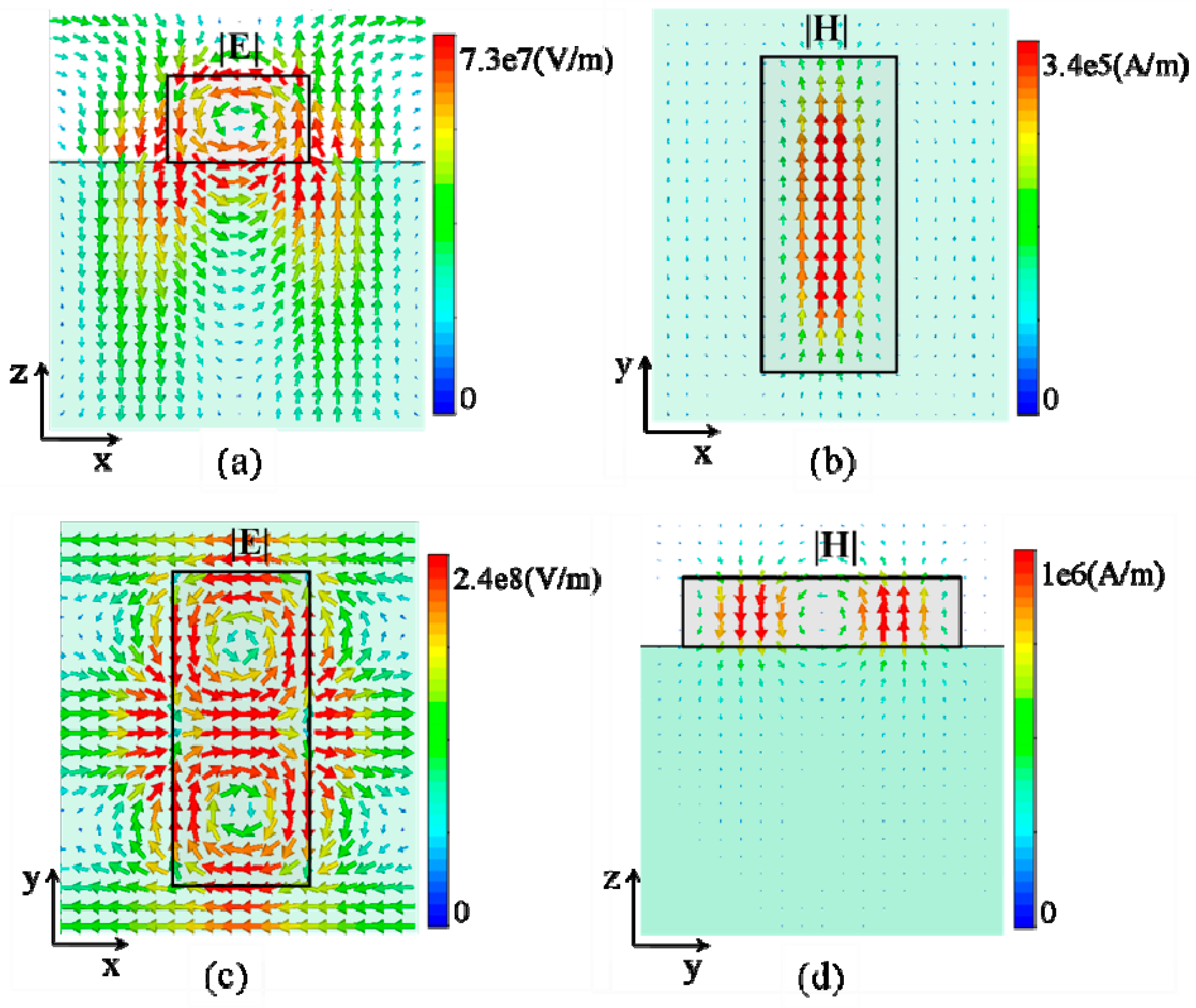
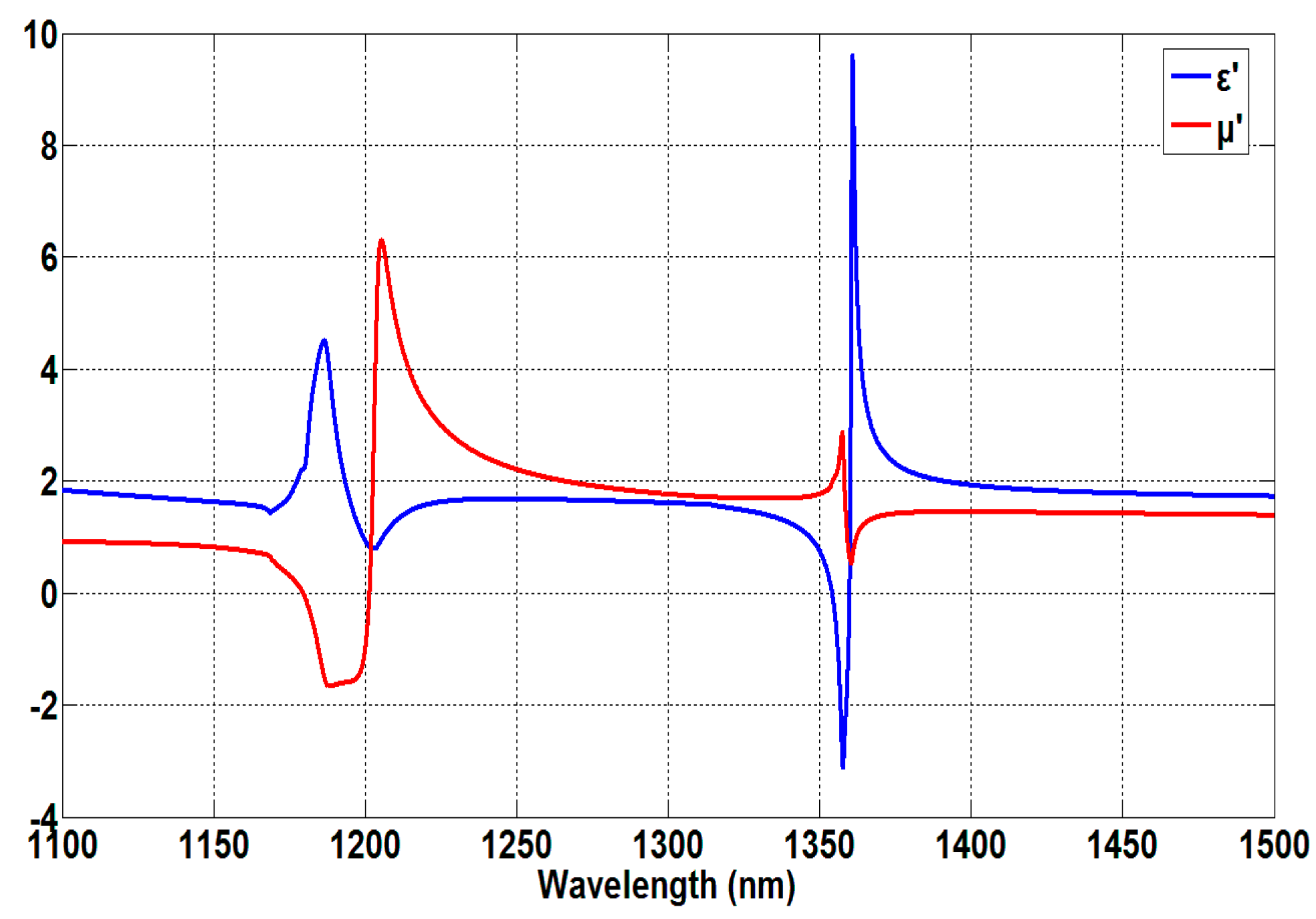
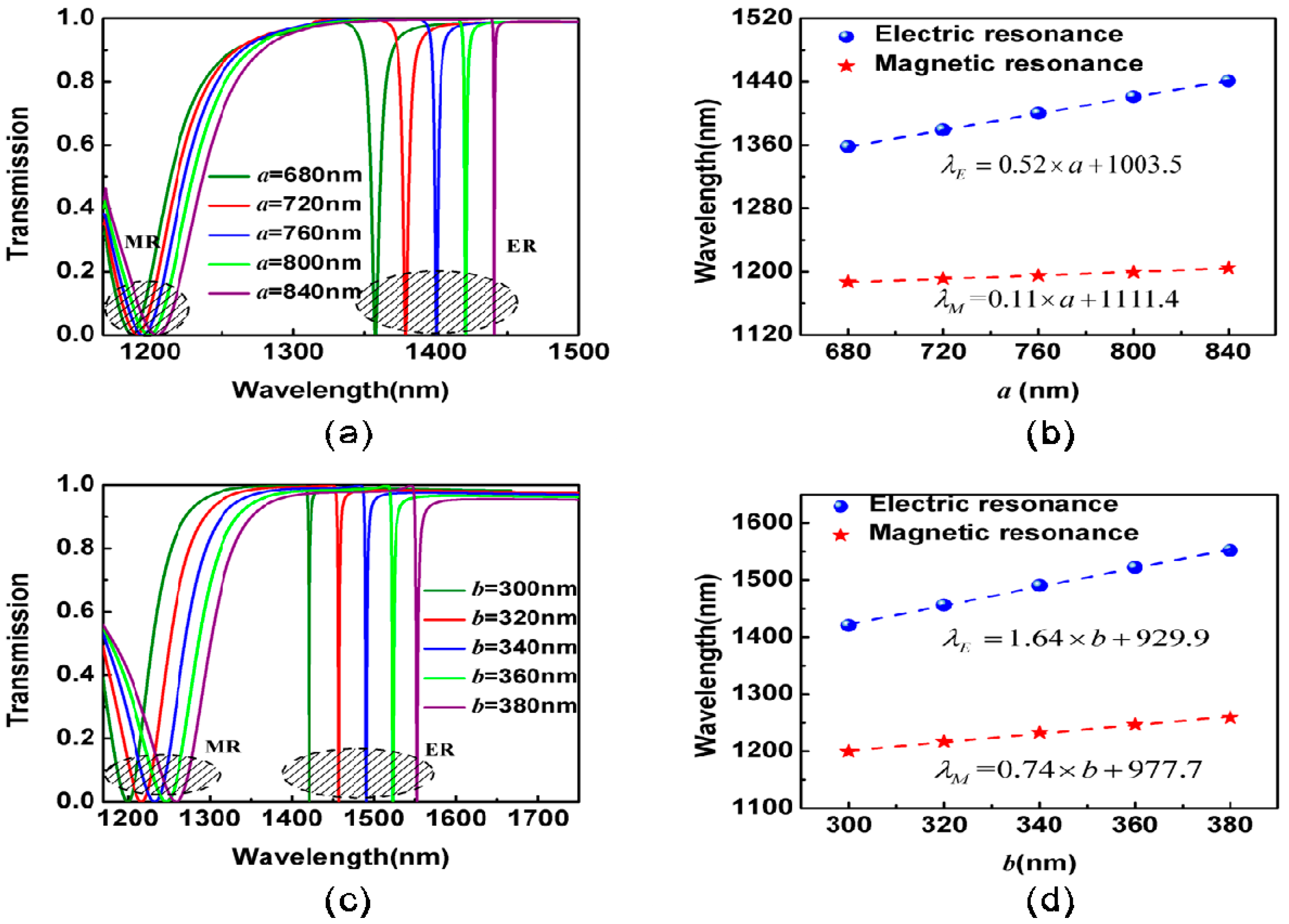
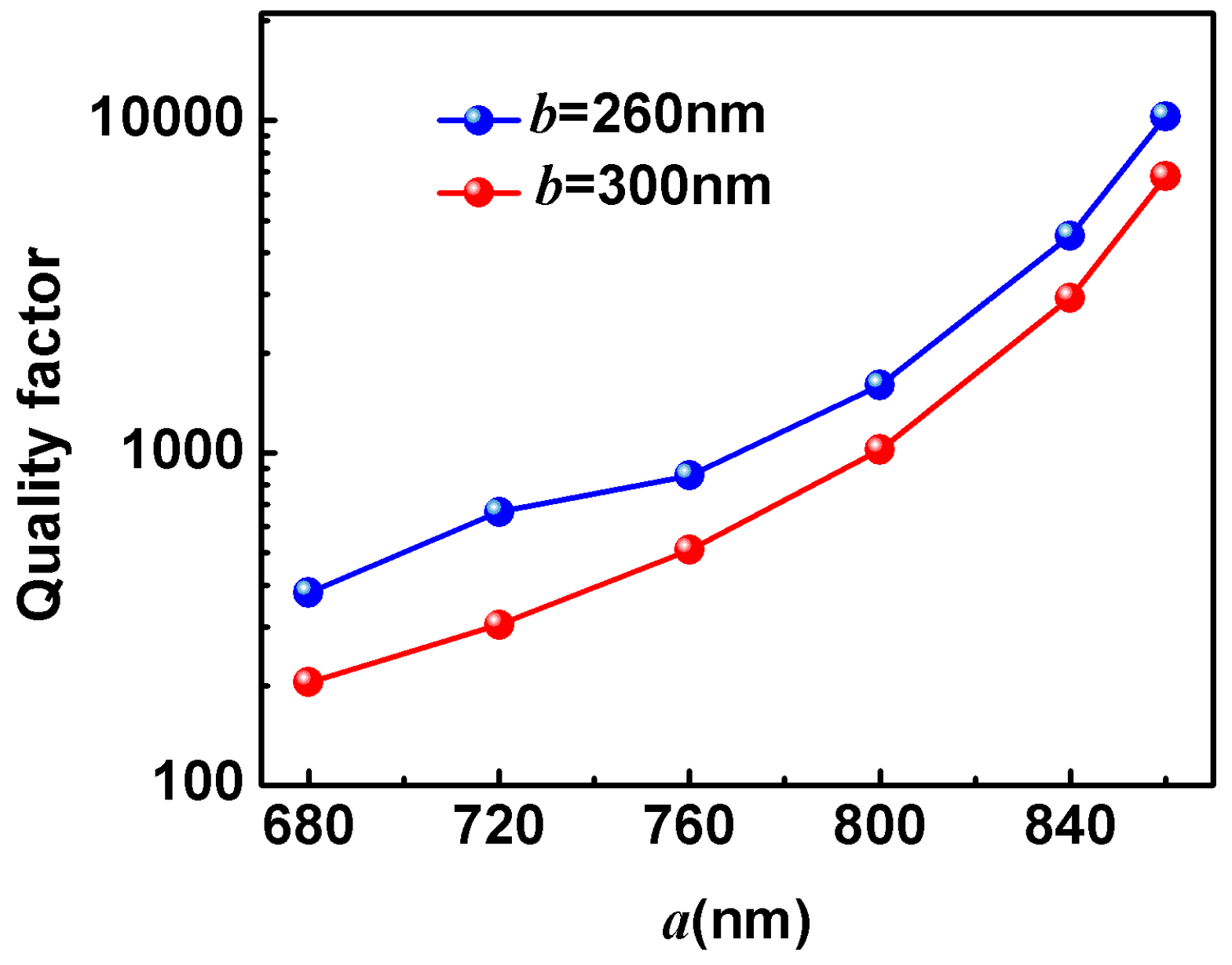
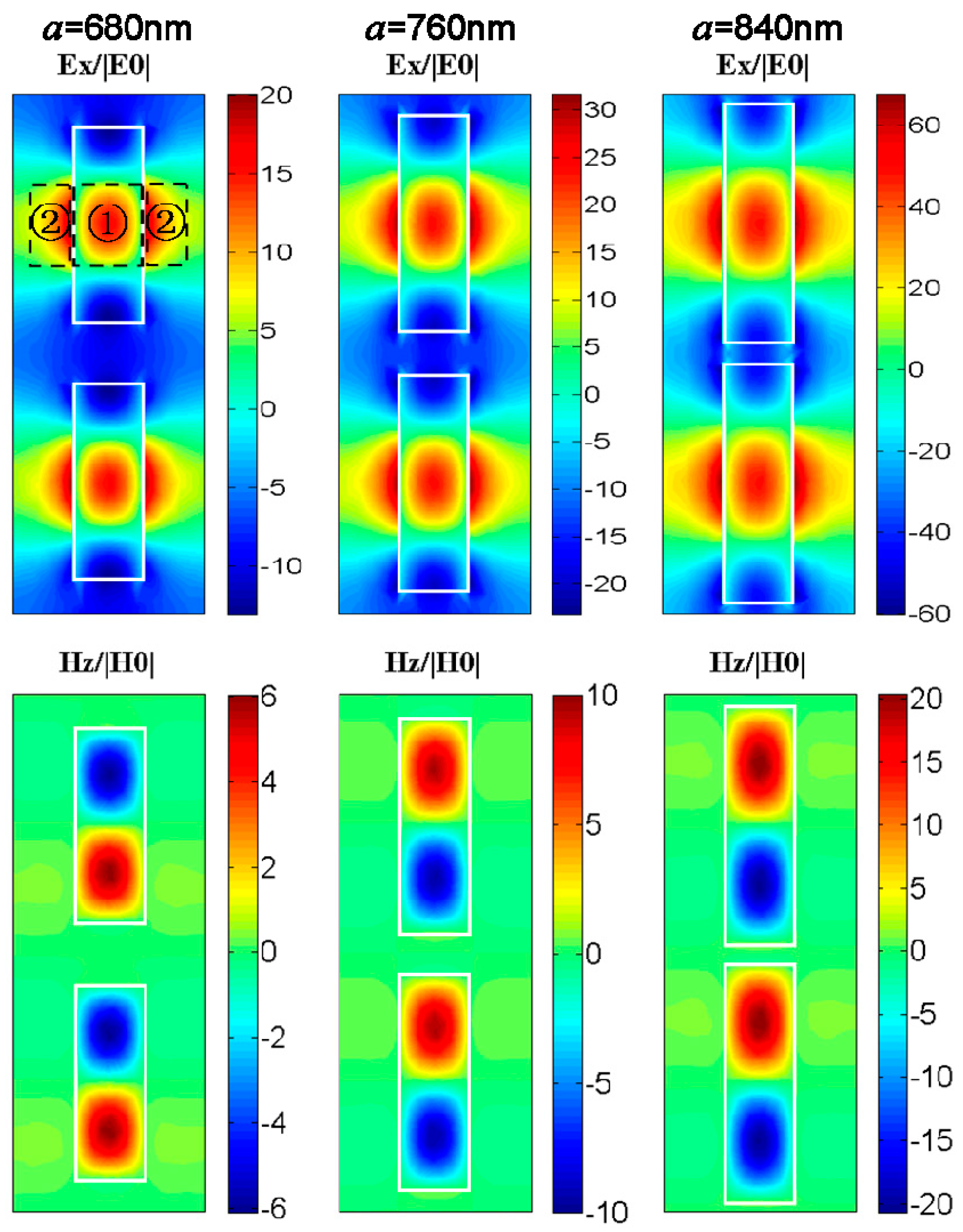
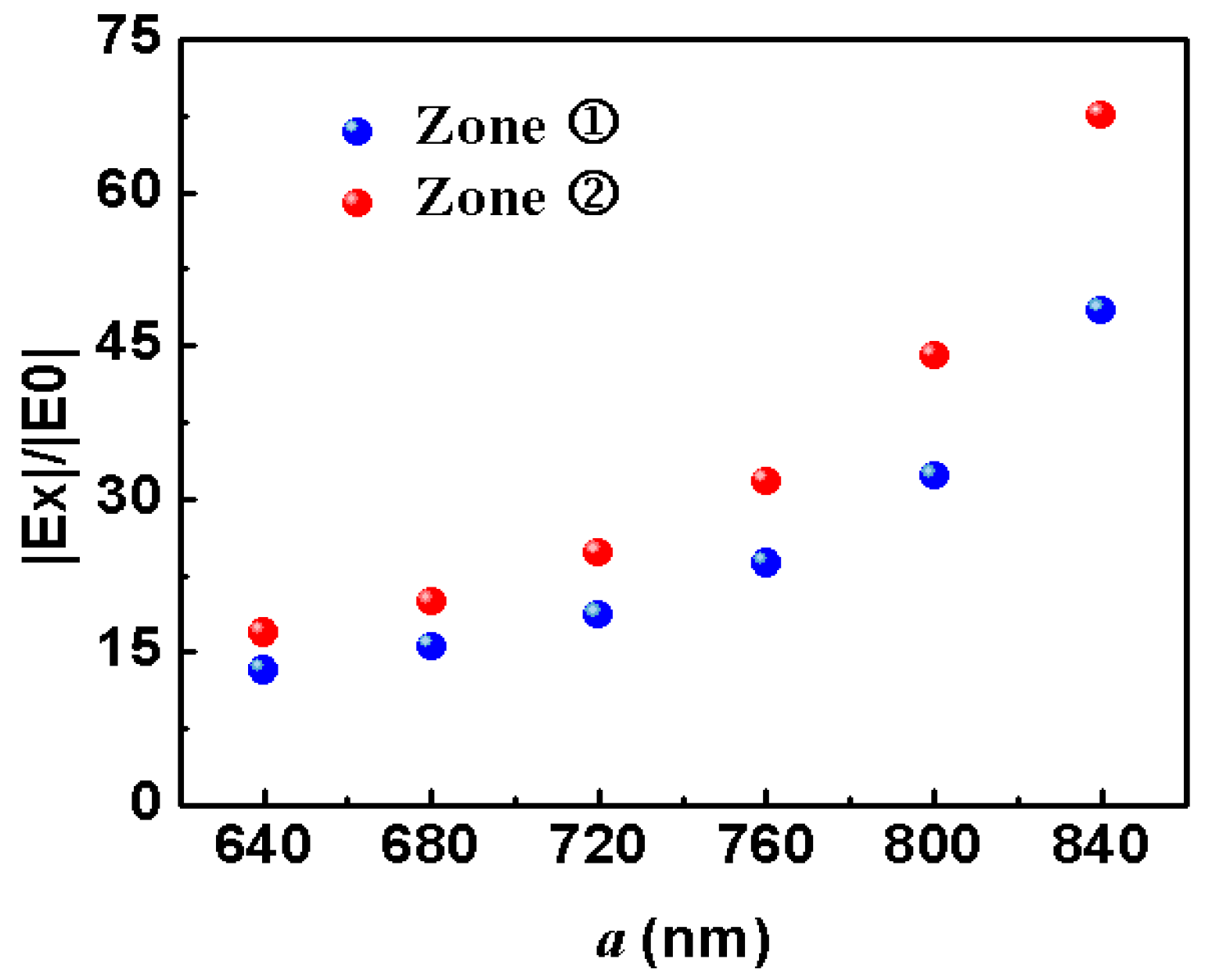
© 2018 by the authors. Licensee MDPI, Basel, Switzerland. This article is an open access article distributed under the terms and conditions of the Creative Commons Attribution (CC BY) license (http://creativecommons.org/licenses/by/4.0/).
Share and Cite
Sui, C.; Li, X.; Lang, T.; Jing, X.; Liu, J.; Hong, Z. High Q-Factor Resonance in a Symmetric Array of All-Dielectric Bars. Appl. Sci. 2018, 8, 161. https://doi.org/10.3390/app8020161
Sui C, Li X, Lang T, Jing X, Liu J, Hong Z. High Q-Factor Resonance in a Symmetric Array of All-Dielectric Bars. Applied Sciences. 2018; 8(2):161. https://doi.org/10.3390/app8020161
Chicago/Turabian StyleSui, Chuanshuai, Xiangjun Li, Tingting Lang, Xufeng Jing, Jianjun Liu, and Zhi Hong. 2018. "High Q-Factor Resonance in a Symmetric Array of All-Dielectric Bars" Applied Sciences 8, no. 2: 161. https://doi.org/10.3390/app8020161



